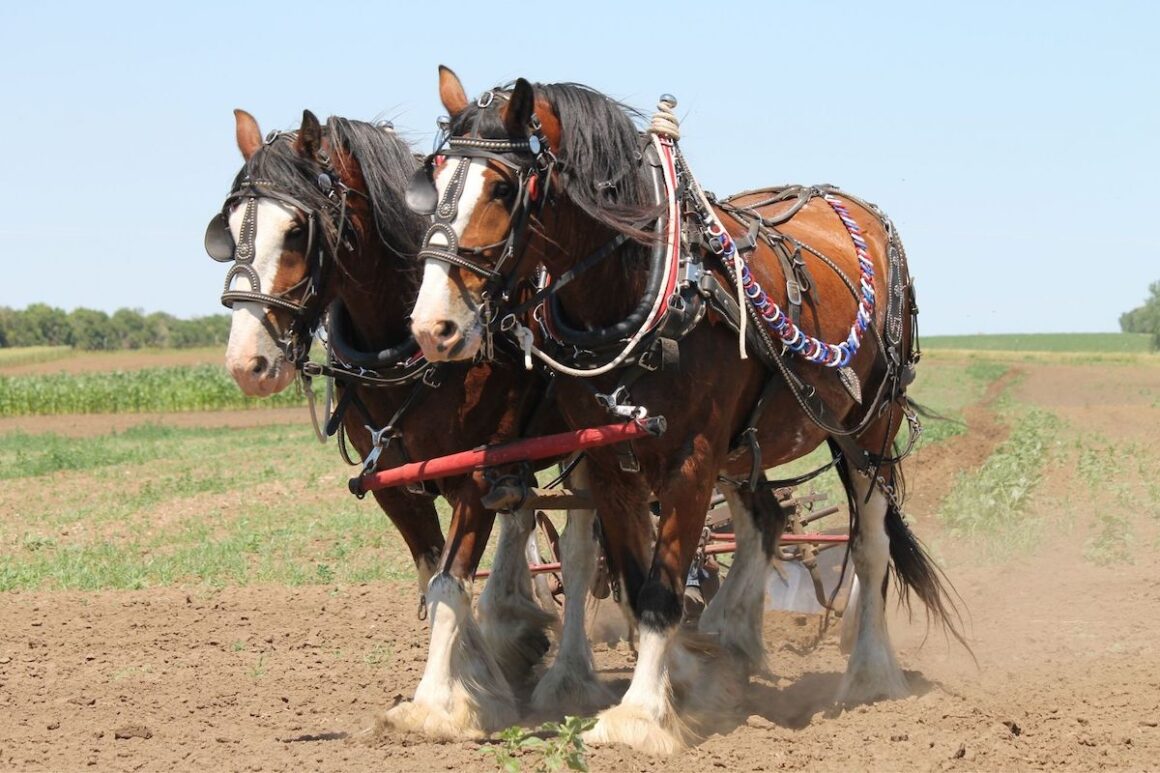In general, horses are strong animals with amazing heart and lung capacity. Draft horses take this to the next level, they are the superheroes of the equine world, with more strength and power than your average horse. These large animals were specifically bred for heavy work. Although their strength is often not needed for work today, they still have a place in the hearts and homes of many equestrians.

Draft horses aren’t like regular horses, also called light breeds. Draft horses are taller, wider, stronger, and have a larger heart and lung capacity that makes them able to accomplish even more than a regular horse. Basically, they’re the superheroes of the equine world. They’re also incredibly kind, making them a welcome addition to any stable as these gentle giants take care of the people that take care of them.
Light horses are breeds used for riding and light driving work. Think of a fancy buggy with two or three people in it. You may also hear these horses referred to as hot-blooded, while drafts are considered cold-blooded horses. Drafts have some unique aspects that separate them from other breeds though, and these distinctions are important to understand.
Definition of a Draft
Merriam-Webster defines a draft horse as “a horse adapted for or used in drawing heavy loads.” They further define them as “… a horse over 1600 pounds in weight and 16 hands high.” While these definitions are helpful, they don’t really tell the rest of the story.
The collective of breeds known as draft horses predominantly originated in northern Europe. This area concentrated on breeding horses that were larger in size and stronger than others. It makes sense, northern Europe has challenging terrain and climates that required strong, fit, agile, and hardy horses. They also had the desire to explore and conquer as seen in the wars fought and areas occupied. These horses helped build the required infrastructure and travel.
But developing a whole type of horse and many distinct breeds doesn’t just randomly happen. Selective breeding was also involved. Records show that draft horse breeding formally started around 500 years ago in Europe, although many of the draft breeds date back further than that. The breeders came together, continued outcrossing to improve their horses, and made them bigger and stronger with each successive generation.
Their Rise and Fall
The Draft horse heyday was from the 17 and 1800s, when they were at their most popular, their populations peaked, and they had an integral role in societies around the world. Both the rise and the fall of draft horses can be linked to the Industrial Revolution, especially here in the United States.
As the human population increased, so did the need for draft horses. This made draft horse breeding and sales a lucrative business, and their population exploded. The Industrial Revolution went from about 1760 to 1840 and introduced machines and mass production. It changed the agrarian lifestyle and moved people into concentrated areas. At first, horses were crucial to the success of the industrial revolution. Machines soon replaced the horses too. Tractors, trains, and trucks soon replaced the gentle giants.
Many drafts were lost during World War I. Tractors and other heavy equipment replaced them following World War II. Breed numbers plummeted and many of them faced extinction. Thankfully, some breeders held on and preserved the horses. They later regained popularity as workhorses in locations where it’s hard to use tractors, for tourism, recreation, and to preserve a way of life. Draft horse use in the beer hitches, as many, not just Budweiser used them, also gave them mainstream recognition.
Draft Horse Breeds
There are many popular draft horse breeds that are well-known even to casual equine observers. The Belgian, Clydesdale, Shire, and Percheron are all popular. Clydesdales are a household name, thanks to the Budweiser hitch and their famous Superbowl commercials that regularly include their horses or hitch.
But it’s important not to distill draft horses down to these four popular breeds that make up much of the mainstream information we have on them. In many areas, including northern Europe where they originated, the lesser-known breeds are still working alongside people, or making a comeback as we rediscover the benefits that true horsepower has over mechanized power.
There are 33 draft breeds on a list provided by Horse Canada. Some of these are those household names, and some are breeds that we don’t always associate with a draft – like the Norwegian Fjord or Haflinger but technically draft. Others like the Breton, Noriker, and Jutland may never be household names, but played an important role in history and continue helping to shape our world.
The thing about superheroes is that there’s always more than meets the eye, and the same is true with our draft horses. There’s a lot more there than meets the eye, but the equine and the rest of the world are a better place because of draft horse contributions.
Sources: American Museum of Natural History, Draft Horse Journal, Horse Canada, Horse Illustrated, Horse Nation, and Merriam-Webster.
